- Home
- Ramachandra Guha
The Picador Book of Cricket Page 5
The Picador Book of Cricket Read online
Page 5
Men said then – and some in both Australia and England still say it – ‘There will never be another like Vic Trumper.’
I never saw Trumper bat; I was only a few years old when he died. But so often have I listened to stories of him, so often have I seen a new light come into the eyes of people at the mention of his name, so much have I read of him, that I am prepared to believe that nobody, before or since, ever achieved the standards of batsmanship set by Trumper. Sir Pelham Warner, Warren Bardsley, Vernon Ransford and others saw all the great moderns and near-moderns – Bradman, Ponsford, Hobbs, Hammond, Hutton, Compton, McCabe and the like – yet there was more than loyalty to their own generation when they cast their minds back over the years and said, ‘There will never be another like Vic.’
Many players, it is true, made more runs; but runs can never be accepted as the true indication of a player’s greatness. A fighting innings of 30 or so under difficult conditions is lost in cold statistics, yet its merits may far outweigh many staid (and unnecessary) centuries that are recorded for all time. The longer I live, I am pleased to say, the less nationalistic I become. The outcome of a match is interesting but not, on the scales of time, of any great moment. What is important is whether a particular contest gives to posterity a challenge that is accepted and won, or yields in classical technique an innings or a bowling effort that makes the game richer, so that the devotee can say years afterwards, with joy in his voice, ‘I saw that performance.’
Trumper went to bat one day against Victoria in Sydney on a wet pitch. The first ball from Jack Saunders (a terror on such pitches) beat him completely. Saunders’ eyes lit up. His fellow Victorians grinned in anticipation. Trumper smiled broadly. ‘Why, Jack,’ he called down the pitch, ‘what a thing to do to an old friend. Well, it’s either you or me for it.’
And then, by dazzling footwork and miraculous stroke play, Trumper hit a century in 60 minutes.
At the beginning of 1904, in Melbourne, Trumper faced up to Rhodes and Hirst on a wet pitch. These Yorkshiremen were two of the greatest left-handed bowlers of all time and a wet Melbourne pitch was known as the worst in the world, with balls from a good length lifting quickly around the chin.
Trumper was first in and last out, for 74, in a total of 122. Hopkins made 18 and Duff 10. Noble, Syd Gregory, Trumble and Armstrong made 9 between them!
That innings caused Charles Fry, in one of his unpredictable moments, to rise suddenly from a reverie during a dinner in London and say: ‘Gentlemen, charge your glasses. I give you the toast of the world’s greatest batsman. Drink to Victor Trumper, first man in, last man out, on a bad pitch and against Hirst and Rhodes.’
Fry knew the full value of such an innings on such a pitch and against two skilled left-handers. His short and unexpected speech brought down the house.
No less interesting is the fact that Mrs Fry (who may or may not have had some knowledge of cricket) shared her famous husband’s admiration of Trumper. My information on this point comes from the Sydney Bulletin of the period. It appears that Mrs Fry declared in a London periodical that Vic Trumper was an artist and that some day someone would paint his portrait and have it hung in a National Gallery. ‘He will be’, the lady said, ‘dressed in white, with his splendid neck bared to the wind, standing on short green grass against a blue sky; he will be waiting for the ball, the orchestra to strike up.’ . . .
My formative days in cricket were spent in the Sydney suburb of Waverley. We adjoined Paddington, the club of Trumper and Noble, but we yielded to no Sydney club in the proud possession of internationals and other first-class players. Carter, all the twentieth-century Gregorys, Kippax, Hendry, Collins, Frank O’Keeffe (one of our very best batsmen who, denied opportunities, went to Victoria, hit two centuries in a game against New South Wales, and then went to the Lancashire League, there dying soon afterwards) and many other proficient players figured with Waverley and established the high standards of the district. One of the great sources of the club’s strength was that cricket, and talk of it, flowed through the life of the district. All the internationals I have mentioned showed themselves on the local oval at practice during the week and played there in the club games on Saturday afternoons.
Saturday evenings and Sunday mornings were given over to post-mortems. We had four grade sides and promising youngsters, if unable to make the grade, were fitted in with the Veterans team where they played under the leadership of men such as Syd Gregory, Australian captain, and Tom Howard, treasurer of the 1934 team to England.
The returning warriors, coming from their games in distant suburbs, would meticulously report in at Bondi Junction on Saturday evenings and at Waverley Park on Sunday mornings – unless, of course, dire personal disaster induced them to go to ground for a week. At those rendezvous both players and critics gathered and form and happenings were first reported and then dissected and judged. It was a hard and discerning school of criticism. Those no longer able to play were in their element as they passed solemn judgment upon some ‘shyster’ or ‘grubber’ – Waverley terms for the lowly cricketer. Few merited the accolade of a ‘great’ performance. Even ‘good’ was seldom used. In the main, ranking varied from ‘fair’ to ‘quite good’.
These critics – some lovely characters among them – knew their cricket. When they had disposed of the present they drifted, fondly, to the hallowed ground of the past, and always, I found, the day’s reminiscences ended on Victor Trumper.
As I walked home I used to wonder how one cricketer could so capture the imagination above all others; and the imagination, moreover, of men so steeped in the game that they were the severest of critics. Yet even years after Trumper’s death they spoke wistfully of him and would brook no interlopers. Nor criticism. Trumper was unique in that nobody ever criticized him as a cricketer or as a man. In England, in Australia, in South Africa, listening to men who knew and played against him, I never at any time heard a derogatory word said against Trumper. That could not be said of any other cricketer of any generation.
A mark of a great man is the power of making lasting impressions upon people he meets. Winston Churchill once wrote of F. E. Smith, the first Earl of Birkenhead: ‘Some men when they die after busy, toilsome, successful lives leave a great stock of scrip and securities, of acres or factories or the goodwill of large undertakings. F. E. banked his treasure in the hearts of his friends, and they will cherish his memory until their time is come.’
That could also have been written of Trumper. He left no stock or securities. He was a singularly unsuccessful businessman. He ran a sporting-goods firm in the city of Sydney but he was too generous with his gifts to accumulate money. Once, on the morning of a Test, he was working in his shop and allowed time to elude him. He hurried into his coat, took down a new bat from the rack, caught a taxi to the Sydney Cricket Ground – and made 185 not out!
It has been said that this was the most brilliant and versatile innings ever played by the Master. The match was the famous one in which R. E. Foster, the Englishman, hit a brilliant 287 in his first Test and Clem Hill was concerned in the most tumultuous run-out in the history of Test cricket . . .
An admirer of Trumper came into his shop after the match and asked whether he could buy a bat Trumper had used.
Yes, he was told. There was the bat used in the recent Test.
The admirer’s eyes sparkled. How much would it be?
‘Well,’ said the impractical Victor, ‘it was a forty-five-shilling bat but it is now second-hand. You can have it for a pound.’
What a difference, this, from a modern I know who swapped a bat with which he had made a record for one of the most fabulous cars seen on a roadway . . .
Another tale of Trumper – there are dozens – was told me by Vernon Ransford, his comrade in many Australian XIs.
The Australians were dressing at Melbourne for a Test, against Sherwell’s South Africans, when there came a knock at the door. Was Mr Trumper available?
Trumper went to the
door and found a young man, a complete stranger, holding a bat. He was anxious to begin in the bat-making business. This was one of his bats and he wondered whether Mr Trumper would use it in the Test.
This usage of material is one of the niceties of ‘amateur’ sport. A successful player is retained to use the material of a certain sports outfitter. Not only, by his play, is he expected to bring glory and advertisement to the firm’s goods, but he must also be well practised in presenting the name on his equipment whenever his photograph is being taken. Thus, when you see a triumphant winner of Wimbledon in a photograph, you have a fair chance of seeing also the name of the racquet used as the hero pushes it to the front. Strictly speaking, of course, amateurs are not allowed to associate their names with sporting goods – and knowing editors now sometimes help them to observe the proprieties by blacking out the name in the printed photograph!
That angle on sport was not developed in Trumper’s day. He would have had in his bag several bats that suited him in weight and balance but, nevertheless, he didn’t hesitate about accepting the young applicant’s gruesome-looking bat. It weighed almost 3 lb 6 oz and it staggered his teammates.
‘Surely’, one of them said, ‘you won’t use that blunderbuss, Vic?’
‘He’s only a young chap and he’s starting out in business,’ replied Trumper. ‘If I can get a few runs with this it might help him.’
He made 87 (probably wearying of lifting it!), inscribed it on the back with a hearty recommendation, and gave it back to the delighted young man.
Hanson Carter, the great wicketkeeper, was my first club captain. ‘You must never’, he once sternly told me, ‘compare Hobbs, Bradman or anybody else with Trumper. If you want to try and classify the great batsmen in the game, put Victor Trumper way up there – on his own – and then you can begin to talk about the rest.’
So, too, with Charlie Macartney, upon whose shoulders the mantle of Trumper was supposed to have descended. He revelled in talking of the things Trumper did. So did Ransford. I sat with him in his office a few years ago when he was secretary of the Melbourne Cricket Ground and he went into rhapsodies regarding the dismally wet season in England in 1902 when Trumper made 2,570 runs.
‘If Vic had been greedy, it could have been 4,000,’ said Ransford. ‘His highest score, despite all the centuries he scored, was only 128. He could, obviously, have turned many of those centuries into double ones had he wished. But he was too generous. He looked around for some deserving character, a youngster maybe, or some player down on his luck, and unostentatiously gave him his wicket. That was Vic.’
Wisden’s wrote of Trumper and that tour: ‘Trumper stood alone. He put everybody else into the shade. No one, not even Ranjitsinhji has been at once so brilliant and so consistent since Dr W. G. Grace was at his best.’
The English bosie bowler, Bosanquet, clean bowled Trumper with the first bosie he sent down to him. ‘Plum’ Warner describes it:
It was in Sydney in 1903. Trumper and Duff had gone in first and in 35 minutes had scored 72 runs by batting, every stroke of which I remember vividly to this day. Bosanquet went on to bowl and his first ball pitched a good length just outside the off stump. Trumper thought it was a leg break and proceeded to cut it late, as he hoped, for four, but it came back and down went his off stump. Subsequently, he used to ‘murder’ Bosanquet but it is worth recording that the first ‘googly’ ever bowled in Australia bowled out the man who, in spite of all the fine deeds of Don Bradman, many Australians regard as the finest batsman their country has ever produced.
It is very doubtful if there has ever been a greater batsman and his wonderful deeds would have been even greater but for indifferent health, which, in the end, cut short his life.
No one ever played so naturally, and he was as modest as he was magnificent. To this day in Australia, he is regarded as the highest ideal of batsmanship. He was, I think, the most fascinating batsman I have seen. He had grace, ease, style and power and a quickness of foot both in jumping out and in getting back to a ball that can surely never be surpassed.
He had every known stroke and one or two of his own. When set on a good wicket it seemed impossible to place a field for him. He was somewhat slightly built, but his sense of timing was so perfect that he hit the ball with tremendous power. Most bowlers are agreed that he was the most difficult batsman to keep quiet. I have heard a great bowler remark, ‘I could, in the ordinary way, keep most people from scoring quickly, but I always felt rather helpless against Trumper, for he was so quick, and he had so many strokes.’ His brilliant batting stirred cricketing England. His unrivalled skill and resource will never be forgotten. No cricketer was ever more popular, and he deserved it, for he preserved the modesty of true greatness and was the beau idéal of a cricketer.
On one occasion, after batting brilliantly at Kennington Oval, Trumper ‘ducked’ an official dinner at night. The fact was, simply, that he didn’t want to be talking ‘shop’ among cricketers and receiving plaudits. He was duly fined for missing an official engagement!
The South Africans had a quick introduction to Trumper. An Australian team called at the Union on the way home from England, where Trumper had had a most successful tour. There were opinions that Trumper wouldn’t find the matting pitches of South Africa too easy and money changed hands to say that, in the few matches played there, Trumper wouldn’t make a century. He hit a double-century in his very first game on the mat!
The South Africans in Australia in 1910–11 were mesmerized by his skill. This was the team with all the bosie bowlers, but Trumper cut, hooked and drove at will. He had a fascinating stroke against a fast yorker. He lifted his back foot, jabbed down on the ball with his bat at an angle and it streaked away to the square-leg boundary. Somewhat naturally, they called it the dog stroke.
He teased Percy Sherwell, the Springbok captain. When a fieldsman was shifted, Trumper deliberately hit the next ball where that man had been. He was a consummate master at placement. Later, somebody commiserated with Sherwell at having his captaincy, his bowlers and his fieldsmen torn to tatters while Trumper made 214; whereupon the Springbok said, ‘Ah, don’t talk about it. We have seen batting today.’
Neville Cardus, the Trumper of cricket writing, once wrote, ‘The art of Trumper is like the art in a bird’s flight, an art that knows not how wonderful it is. Batting was for him a superb dissipation, a spontaneous spreading of fine feathers.’
How unfortunate it is that Trumper slightly preceded the movie-camera age!
Posterity has the chance of seeing all the moderns in action, as it has of hearing all the great singing voices. Mr Menzies, our Prime Minister, has a thrilling film of Don Bradman – there are a number of copies of the same film in existence – and to see Bradman on the screen is to realize again, instantly, his great stature as a batsman. The speed of his footwork, the flay of his bat, the manner in which he ‘smelt’ the ball, so over the ball was his head – all this has been caught and kept for the years to come and, in the evidence of the film, there can be no possible disputation over Bradman’s status in the game.
With Trumper it is different. All we have, so far as I know, are the several photographic ‘stills’ of him at the beginning of an off drive and at the finish and, also, of his stance at the crease. But these do portray his art. The two of him playing the off drive are technically perfect in every detail – his feet, his shoulders, his head, his back swing, his follow-through with the proper transfer of weight and then, finally, the full, flowing arc of the bat. His stance is perfection.
Those who saw and knew Trumper used to say that Macartney, Jackson and Kippax were reminiscent of him; but that even when they were at their greatest they served only to rekindle memories of the Great Man. He was, obviously, supreme on the field; and a man of kind and generous nature, of consideration for his fellow man, off the field. He embodied, to those who knew him, all that was good and noble in cricket and life.
‘Where would you like your field placed
?’ ‘Plum’ Warner, as captain, once asked George Hirst. And Hirst replied, ‘It doesn’t much matter, sir, where we put ’em. Victor will still do as ’e likes.’
The evidence, then, would seem to be conclusive. Many of Trumper’s greatest innings were played in the full face of adversity, the true test of worth. He rose to heights on wet wickets where others tumbled to earth. Although some half a dozen or so players down the years could be regarded as really great, Trumper, as Carter said, merits a niche of his own. He brought to the game an artistry, a talent, and an inherent modesty not manifested by any other cricketer. In short, he possessed all the graces.
⋆ ⋆ ⋆
Sydney Francis Barnes is generally reckoned to be the greatest of all bowlers. He took 189 wickets in 27 Tests: 7 a match – an average no one else has remotely approached. But he could easily have played twice as many Tests had he bent more willingly to authority, or played for a fashionable county. His magnificent bowling and truculent spirit are both captured in this remembrance. Its author, Bernard Hollowood, played with Barnes for Staffordshire, and himself ended up as editor of Punch.
BERNARD HOLLOWOOD
The Greatest of Bowlers (1970)
Easily the greatest of Staffordshire cricketers was Sydney Francis Barnes, who was born on 19 April 1873.
Three years ago, on the Saturday of a Lord’s Test, I spotted him in the pavilion. He was alone, puffing at his pipe and glaring out through the Long Room window at the sun-drenched arena. I had not seen him since 1935 and I was amazed to find so little change in him. He stood as straight as a guardsman, and was as lean and leathery as in his heyday. As I watched him I remembered the profound shock I had experienced on first seeing him strip for action at Birkenhead Park. He then had seemed indecently ancient, senile almost . . . One corner of the changing-room was roped off by his paraphernalia, his shirts, liniments, embrocations, bandages, elastic supports; and a fearful odour seeped from this clutter. It was the smell of hospitals. I looked for formaldehyde and other embalming fluids, for crutches, wooden legs and scars of operations.

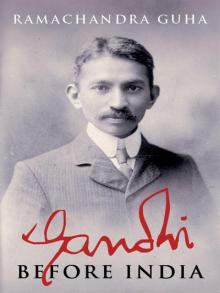 Gandhi Before India
Gandhi Before India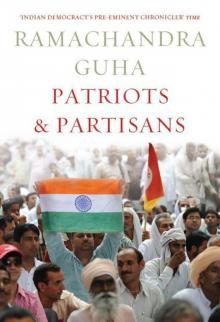 Patriots & Partisans
Patriots & Partisans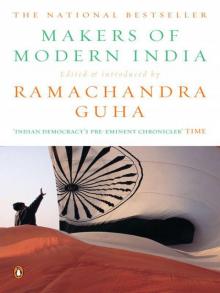 Makers of Modern India
Makers of Modern India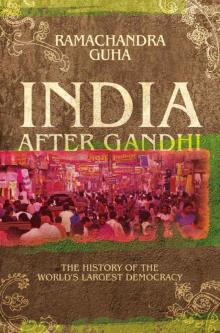 India After Gandhi: The History of the World's Largest Democracy
India After Gandhi: The History of the World's Largest Democracy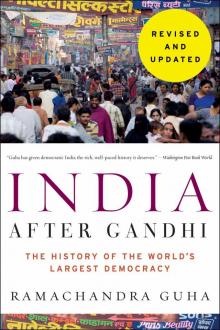 India After Gandhi Revised and Updated Edition
India After Gandhi Revised and Updated Edition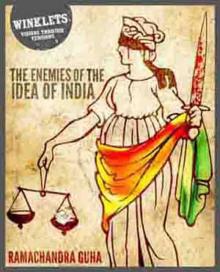 The Enemies of the Idea of India
The Enemies of the Idea of India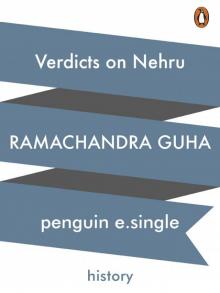 Verdicts on Nehru
Verdicts on Nehru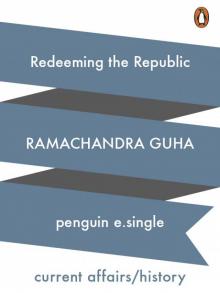 Redeeming the Republic
Redeeming the Republic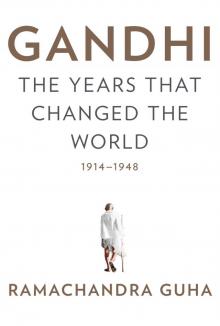 Gandhi
Gandhi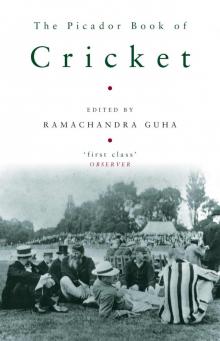 The Picador Book of Cricket
The Picador Book of Cricket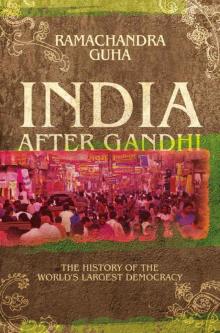 India After Gandhi
India After Gandhi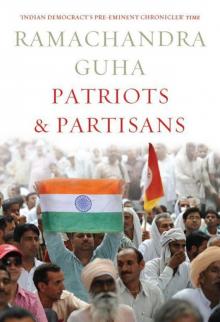 Patriots and Partisans: From Nehru to Hindutva and Beyond
Patriots and Partisans: From Nehru to Hindutva and Beyond